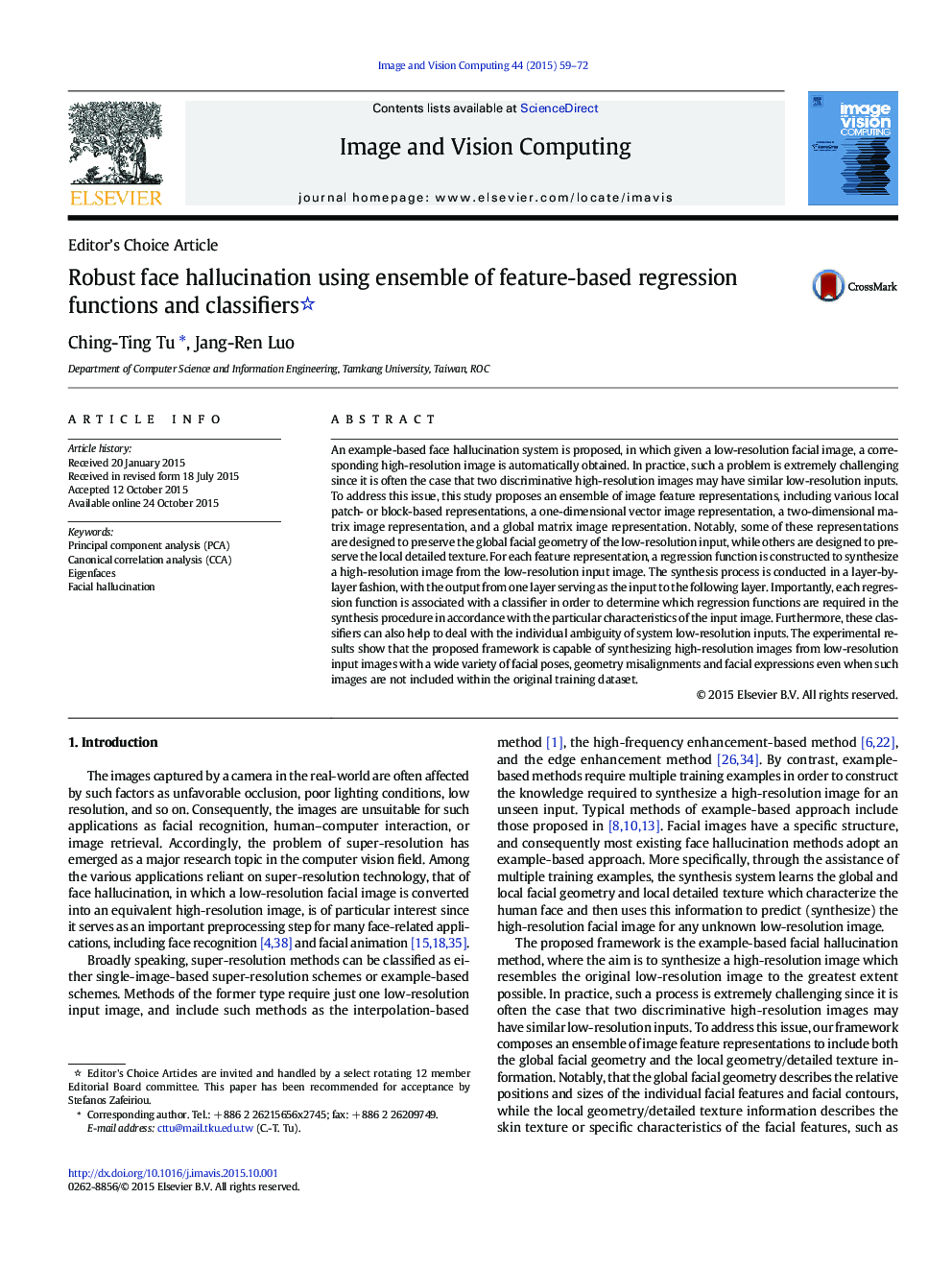| Article ID | Journal | Published Year | Pages | File Type |
|---|---|---|---|---|
| 526972 | Image and Vision Computing | 2015 | 14 Pages |
•Propose an example-based face hallucination framework.•Proposed ensemble learning for face hallucination.•Reconstruct both global and local facial features.•Individual ambiguity of system low-resolution inputs is considered in this framework.
An example-based face hallucination system is proposed, in which given a low-resolution facial image, a corresponding high-resolution image is automatically obtained. In practice, such a problem is extremely challenging since it is often the case that two discriminative high-resolution images may have similar low-resolution inputs. To address this issue, this study proposes an ensemble of image feature representations, including various local patch- or block-based representations, a one-dimensional vector image representation, a two-dimensional matrix image representation, and a global matrix image representation. Notably, some of these representations are designed to preserve the global facial geometry of the low-resolution input, while others are designed to preserve the local detailed texture. For each feature representation, a regression function is constructed to synthesize a high-resolution image from the low-resolution input image. The synthesis process is conducted in a layer-by-layer fashion, with the output from one layer serving as the input to the following layer. Importantly, each regression function is associated with a classifier in order to determine which regression functions are required in the synthesis procedure in accordance with the particular characteristics of the input image. Furthermore, these classifiers can also help to deal with the individual ambiguity of system low-resolution inputs. The experimental results show that the proposed framework is capable of synthesizing high-resolution images from low-resolution input images with a wide variety of facial poses, geometry misalignments and facial expressions even when such images are not included within the original training dataset.
